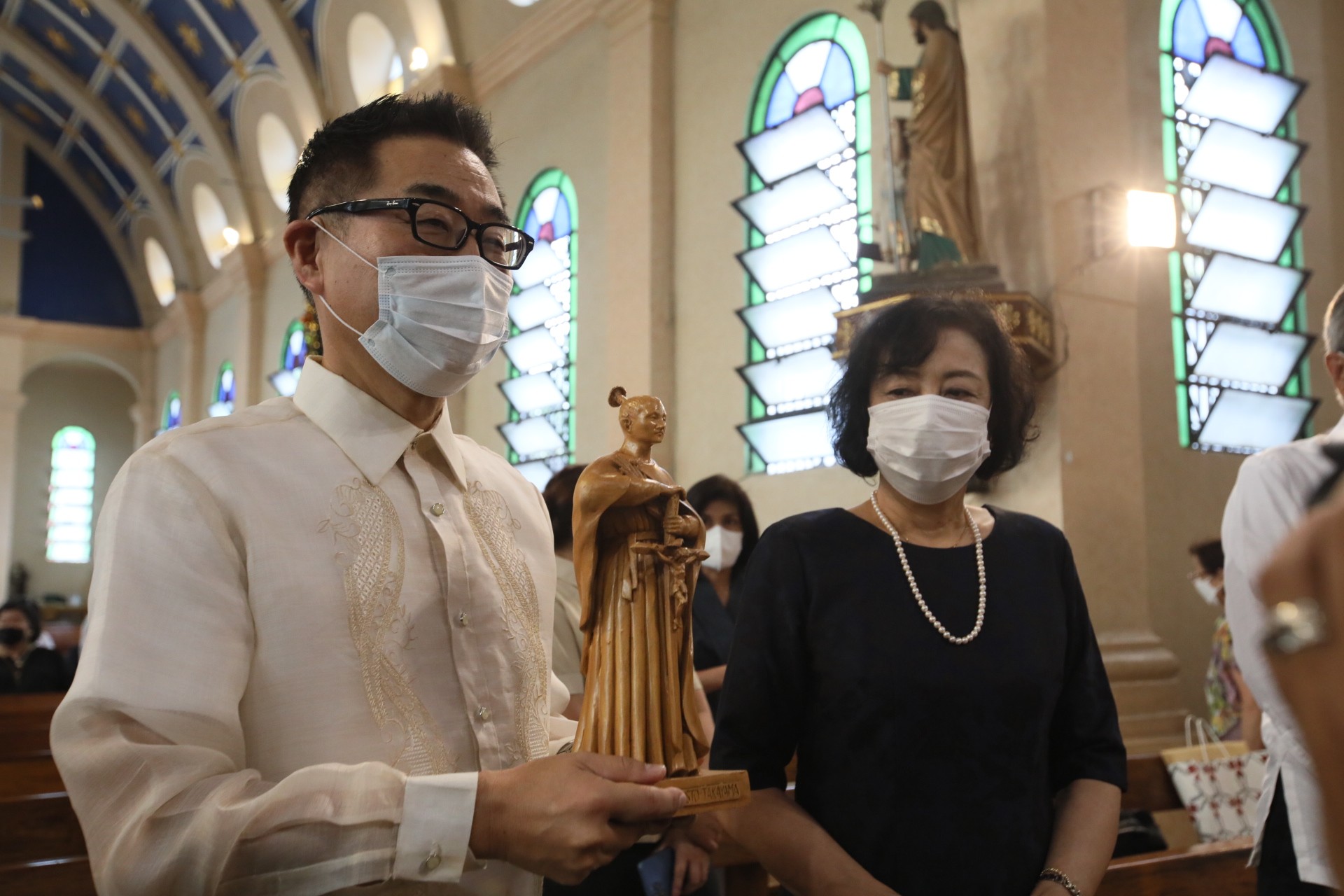News
Japanese martyr’s statue installed in Manila church

STATUE ENTHRONEMENT. Japanese Ambassador Koshikawa Kazuhiko and his wife Yuko attend the statue enthronement of Blessed Justo Ukon Takayama at the San Miguel Pro-Cathedral in San Miguel, Manila on Wednesday (Dec. 21, 2022). In his speech, Koshikawa said Blessed Takayama Ukon’s pioneering legacy continues to live on throughout centuries and hope for more Japanese visitors to get to know more about him through his statue. The enthronement of Blessed Takayama Ukon’s statue also marked the 408th anniversary of his exile from Japan to Manila along with 350 other Catholic Japanese. (PNA photo by Avito Dalan)
MANILA – A new statue of Japanese martyr, Blessed Justo Ukon Takayama, has been installed in Manila, where most of the Japanese Catholics exiled in the Philippines first settled some 400 years ago.
Manila Archbishop Jose Cardinal Advincula blessed the statue during a Wednesday mass at San Miguel Church inside the Malacanang Palace complex.
In attendance were Japanese Ambassador Kazuhiko Koshikawa, Japanese Association in Manila President Seiji Takano and members of the Filipino movement Prayer Warriors of Blessed Takayama.
The statue is a replica of the wooden sculpture that was sent to the Vatican and commissioned from the very same sculptor who carved the official image of Saint Pedro Calungsod.
Takayama was a Japanese samurai and feudal lord who was exiled along with over 300 other Japanese Catholics for their Christian faith by the Tokugawa Shogunate 408 years ago.
Takayama’s exile ship reached the shores of Manila on Dec. 21, 1614 following an arduous 44-day journey from Nagasaki, Japan. He died in Intramuros on Feb. 3, 1615 and was beatified by the Vatican in 2017.
While there are more than 30 other statues spread in various parts of the country and Japan, the latest installation is particularly significant as San Miguel was where most of the 300 exiles lived when they came to Manila.
De Pedro hoped to place more Blessed Takayama statues across the country, especially those that host an image of Saint Pedro Calungsod.
“Anywhere where there is a San Lorenzo statue, Takayama should be there because Takayama and San Lorenzo are the symbols of Philippine Japanese Christianity,” he said in an interview.
“Both (are) martyrs, they are the bridge of understanding between our two countries. That’s the only way you can understand Japan, that’s the only way you can understand the Philippines,” he added.
Koshikawa said Takayama’s faith that continues to live on among his devotees was remarkable and represents the “very good friendship” between the Filipino and Japanese people.
“Even after more than 400 years still he’s in spirit and appreciated by the people living here,” he told reporters.
“I think this also represents the current very good relations or friendship between Japan and (the) Philippines. So (if it is) possible to ask Takayama how do you think of the current good relation between Philippines and Japan –now, the bilateral relation is described as closer than brothers. I think Ukon Takayama would be very much pleased to hear that,” he added.





















